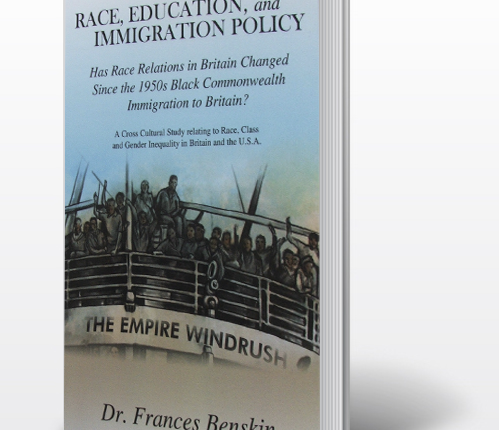The author’s second Book: Race Education and Immigration Policy: looks at the interrelationship  between race education and immigration policy, and how policies do affect individual’s wellbeing. What part do policies play in how rules are formulated and implemented? Policies are designed to change people’s perceptions and usually to improve people’s circumstances for the better. For instance, Equal Opportunities Policy of (1975) was a Sex discrimination Policy to give women in the workforce equal pay on the same basis as men for doing the same type of job in which they were paid less than men. There was also the Race Relations Act (1976) when black people was being discriminated against in almost all sectors of society in jobs, housing, education, social services, the list goes on.
between race education and immigration policy, and how policies do affect individual’s wellbeing. What part do policies play in how rules are formulated and implemented? Policies are designed to change people’s perceptions and usually to improve people’s circumstances for the better. For instance, Equal Opportunities Policy of (1975) was a Sex discrimination Policy to give women in the workforce equal pay on the same basis as men for doing the same type of job in which they were paid less than men. There was also the Race Relations Act (1976) when black people was being discriminated against in almost all sectors of society in jobs, housing, education, social services, the list goes on.
Based on those policies, through government intervention many employers changed their attitudes in how they recruit and treat black workers. This also led to a gradual change of the perception of the indigenous people in how they view other races in society especially Africans, Caribbean’s, and Asians. Policies do change attitudes, but gradually.
We do not need a society which divides people into racial categories, black, white, rich, poor, Jews, Asians, ethnics etc. We all can do our part to change this, by accepting people for who they are instead of seeing them as strangers who should not be here. This type of attitude can cause tension and hostility between communities, especially when people feel that they are not welcome.
PRODUCT DESCRIPTION: – Race Education & Immigration Policy
This book explores factors such as exclusion in schools, bullying, managing children’s behaviour in the classroom, and how teachers can create order in the classroom, and help children to see a better side to themselves in fostering good behaviour.
Children needs to be taught from an early age the importance of maintaining discipline, both in the home and in the classroom, and once this is instilled in them, they usually portray good behaviour. No child is uncontrollable there is always a way to get good results. In order to find a solution to unacceptable behaviour in children, you need to know what the child may be going through, or what is causing them to behave in a certain way. Matalon’s study (1998) suggested that is important to recapture discipline in the classroom.
This can be done through positive reinforcement rather than punishment. Children can be taught without disrupting lessons. If they do not have clear boundaries that can create problems for themselves and the school, because they may be confused about what is expected of them. Guidance is also another.
Buy This Book
